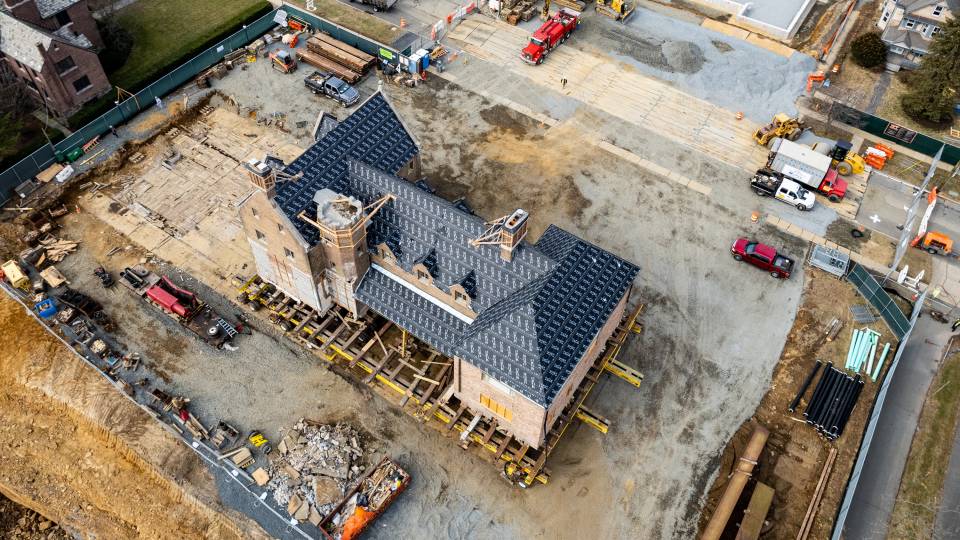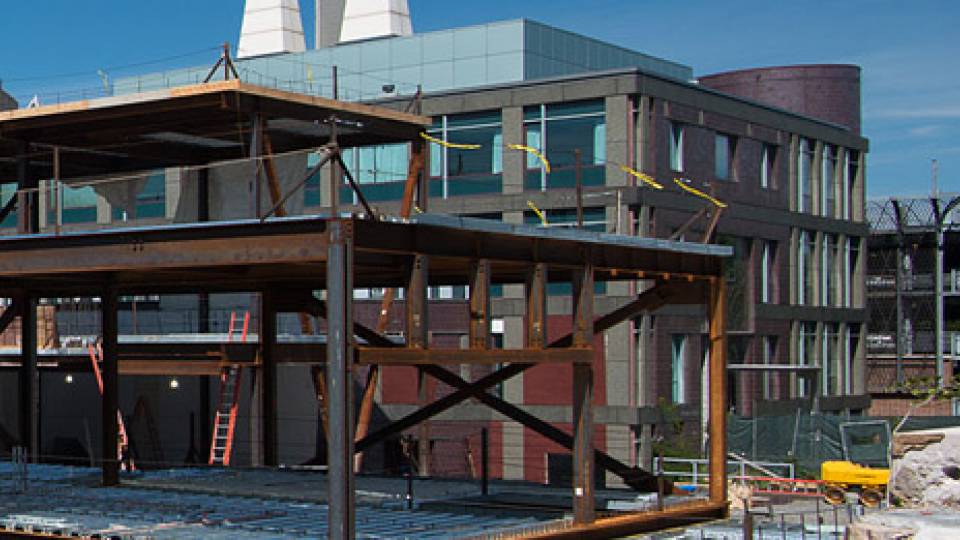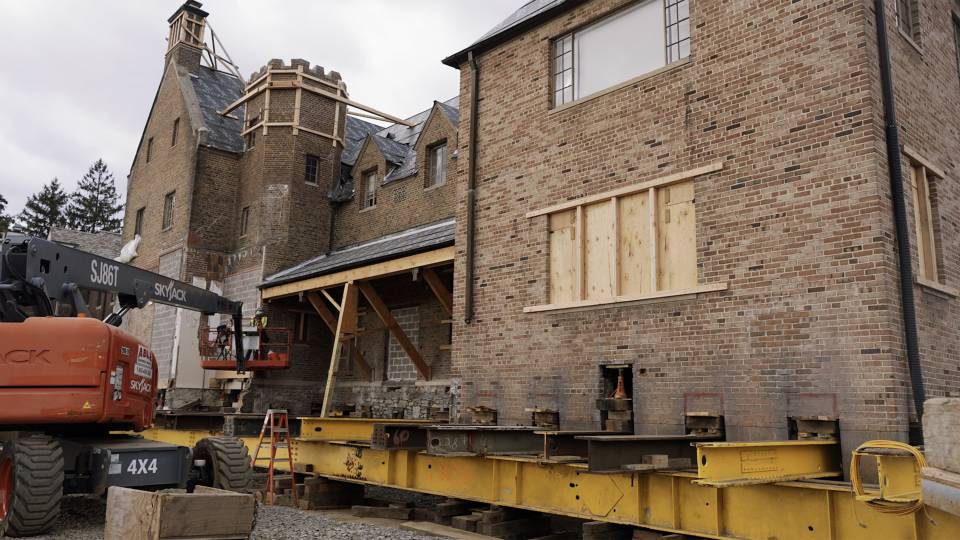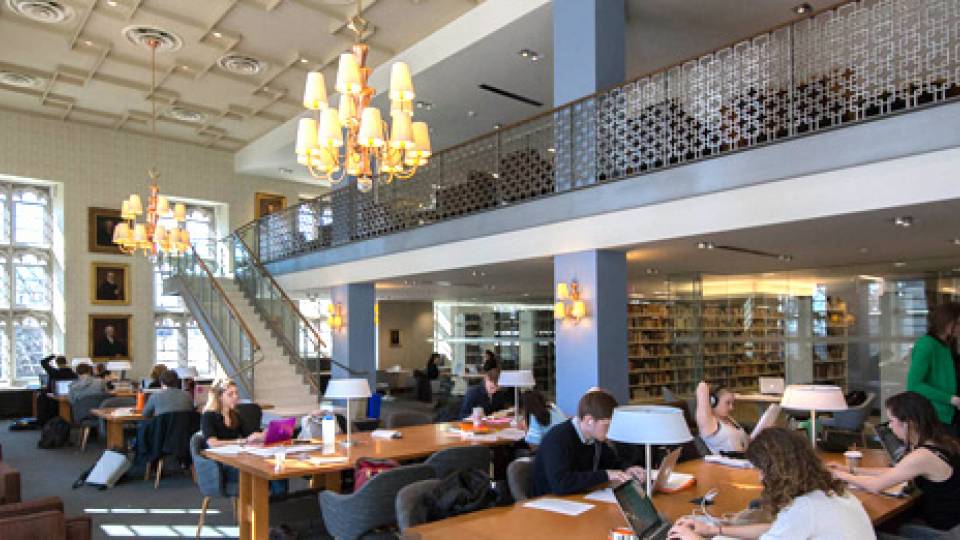A wrought iron rosette graces the pediment of Princeton University’s historic Ferris Thompson Gateway, which was recently restored.
Princeton University’s Ferris Thompson Gateway, which has stood proudly along Prospect Avenue since it was built in 1911 as a grand entrance to the former University Field, has been restored to its original glory and was reinstalled in early January.
The ornamental gateway — named for its donor, track-and-field athlete Ferris Thompson, Class of 1888, and designed by the renowned New York-based design firm of McKim, Mead and White — underwent five months of rehabilitation, including the artisanal fabrication of elaborate scrollwork and leafy vine patterns with authentic wrought iron, a modern rarity.

Workers from Anderson Ironworks in Oreland, Pennsylvania, installed missing decorative portions of the gateway on site in early January.
“The project highlights the care that the University takes to preserve our historic campus,” said Kristin Appelget, assistant vice president for community and regional affairs.
“Although the fields are long gone, the gated wall is a reminder of Princeton’s early history and has remained an important landmark on Prospect Avenue ever since,” said Dan Casey, senior project planner in the Office of the University Architect. “We are delighted to see the gates made whole again.”
Casey said the gateway was damaged many years ago during a construction project and its signature feature — a highly decorative wrought iron pediment above the entrance — was removed and at some point misplaced. For years, it has been the University’s intention to restore the gate in keeping with its original design and the historic character of the section of Prospect Avenue that borders Washington Road.
In July 2022, the Princeton Council designated the area containing the Ferris Thompson Gateway as the Prospect Avenue Historic District.
The artistry of another era
As part of Princeton’s campus landscape master plan, the gateway restoration was prioritized, and in 2021, the University hired Rob Anderson of Anderson Ironworks in Oreland, Pennsylvania, to take on the project, Casey said.
When the gateway was conceived and built, it stood as the southern border of the former University Field and included 860 feet of brick and granite with marble coping, running the entire length of the field on Prospect Avenue and continuing down Olden Street.
The wall was 20 feet high in some places, and the main, three-part gateway — 58-feet wide and situated at the midpoint of Prospect Avenue — was flanked by pillars of brick and granite topped with carved marble tigers.
The plans were drawn by McKim, Mead and White, which also designed FitzRandolph Gate on Nassau Street.
In its early years, the Ferris Thompson Gateway served not only as a welcome to the University’s athletic fields, but also as a passageway for the P-rade at Commencement.
Those fields eventually became the site for the University’s Engineering Quad and, later, for the Andlinger Center for Energy and the Environment. What remains of the gateway and the original wall now stands at the front of Bowen Hall along Prospect Avenue.
Casey said once the decision was made to restore the gateway, University employees attempted to locate the original top section, but to no avail. Instead, they were able to provide Anderson and his team with the architects’ original drawings and historic photos to guide them in reconstructing the iron scrollwork and vine patterns comprising the pediment across the middle top, as well as two elaborate capital finials at each side of the central opening.
“There aren’t many artisans who are qualified in fabricating wrought iron,” Casey said. “Most metal shops now use aluminum or steel and have lost some of the skills needed for working in authentic wrought iron — especially at this level of detail and at this large scale.”
Anderson called the restoration “a once-in-a-lifetime project.”
He said real wrought iron is hard to come by (most iron today is made with steel), but the University happened to have a sufficient length of wrought iron fence — about 70 feet worth — in one of its storage yards.

The gateway was built in 1911 at the southern border of the former University Field and included 860 feet of brick and granite with marble coping along Prospect Avenue and continuing down Olden Street.
“It was enough material to do what we needed to do,” Anderson said. He and his artisans fabricated the missing decorative elements, including remaking the scrolls, vines and each leaf in the pediment by hand.
Structurally, the gate was sound, and only minor repairs were made during the installation, Anderson said. Some other deteriorated leaves were replaced, along with the lock boxes.
“It’s unique in the industry to be working with real raw wrought iron right now,” Anderson said. “Myself and everyone in the shop were super excited to work on it and be part of it, and we are glad that we were chosen to do it.”





